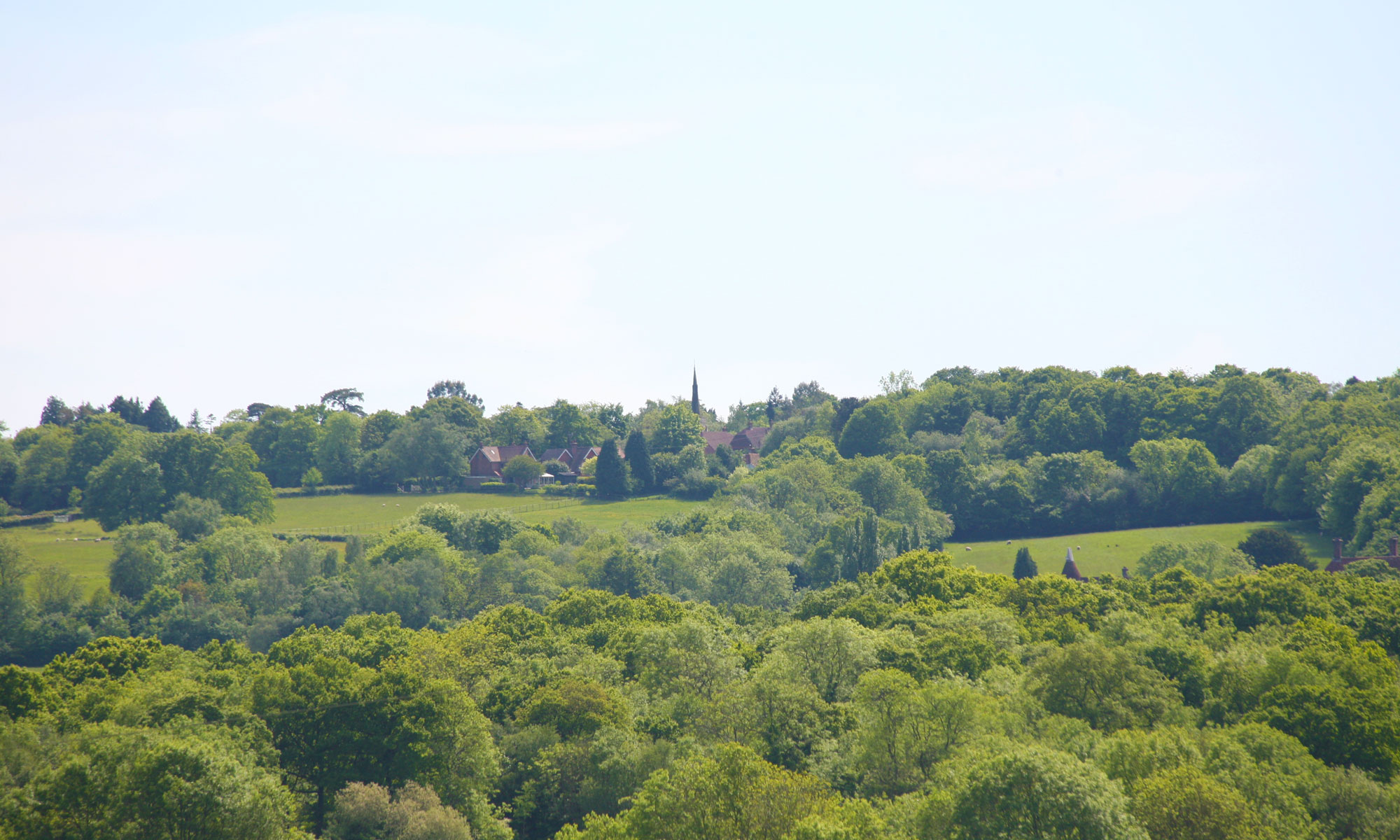Pilot Officer W. H. G. (Scotty) Gordon
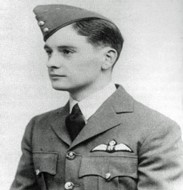 The intention of including ‘Biography’ pages in the ‘Village Trust’ section of the Hadlow Down web site (www.hadlowdown.com) was to provide readers with an informative collection of notable people who by residency, birth, marriage or contribution to its social history were associated with Hadlow Down.
The intention of including ‘Biography’ pages in the ‘Village Trust’ section of the Hadlow Down web site (www.hadlowdown.com) was to provide readers with an informative collection of notable people who by residency, birth, marriage or contribution to its social history were associated with Hadlow Down.
An exception to the normal criteria for inclusion is that of P/O W.H.G Gordon who was sadly shot down over Howbourne Farm fields, Hadlow Down while piloting a Spitfire on September 6th 1940, during a ferocious dogfight with three German Messerschmitt 109’s.William Hugh Gibson Gordon was born in Aberdeen in 1920, the son of William Gordon and Maggie Ann Gordon (nee Wills), he began his education at Mortlach Primary School in Scotland. He joined the RAF on a short service commission and began his elementary flying training on 13th March 1939. On 13th May 1939 he went to No. 1 RAF Depot Uxbridge for a short induction course and moved on to 6 FTS Little Rissington for No. 12 Course, which ran from 1st May to 6th November 1939. He joined 234 Squadron direct from 6 FTS, the squadron had only recently been reformed at Leconfield. On active duty he shared in the probable destruction of a Ju88 on 12th July 1940 and claimed a Me109 destroyed over the Isle of Wight on 24th August.
On the day he died the weather was 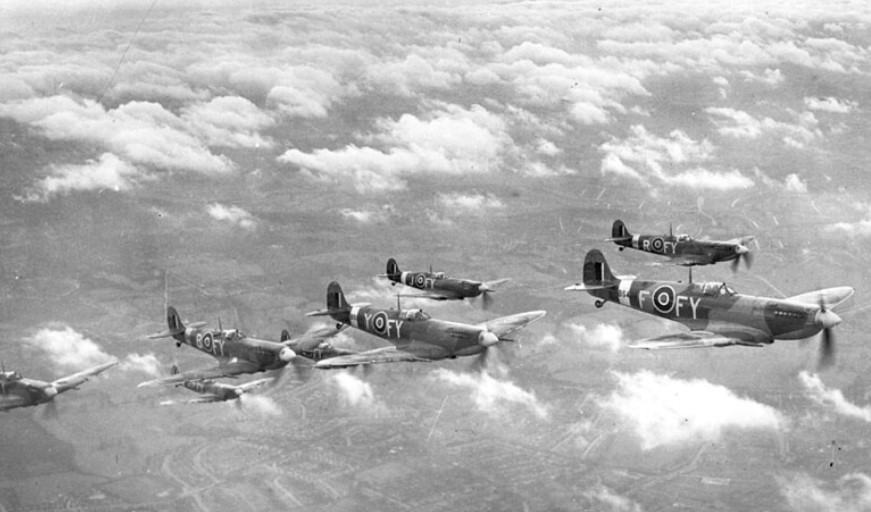 fine but cool with haze in the Straits and Thames Estuary. He was one of twelve Spitfires taking off from the base mobilised with the task of patrolling south-east of Brooklands, Weybridge. The aerodrome there was the site of the Hawker factory where half the total output of Hurricanes was produced and had been attacked by the Luftwaffe only two days earlier. At the initiative of the squadron’s C.O. (Squadron Leader O’Brien) the formation climbed to 24,000 feet. Six Bf109 fighters were sighted off Beachy Head. However, on closing in it became clear they were part of a much larger force 0f Messerschmitts escorting Dornier bombers. No.234 Squadron attacked without hesitation and became embroiled in a melee ranging between Eastbourne and Dover. P/O Gordon’s Spitfire was apparently downed during a dogfight with three Bf109s. Post war records indicate a strong possibility that he was shot-down (as claimed) by a future Knights Cross holder by the name of Gustav Sprick of Jagdgeschwader 26.
fine but cool with haze in the Straits and Thames Estuary. He was one of twelve Spitfires taking off from the base mobilised with the task of patrolling south-east of Brooklands, Weybridge. The aerodrome there was the site of the Hawker factory where half the total output of Hurricanes was produced and had been attacked by the Luftwaffe only two days earlier. At the initiative of the squadron’s C.O. (Squadron Leader O’Brien) the formation climbed to 24,000 feet. Six Bf109 fighters were sighted off Beachy Head. However, on closing in it became clear they were part of a much larger force 0f Messerschmitts escorting Dornier bombers. No.234 Squadron attacked without hesitation and became embroiled in a melee ranging between Eastbourne and Dover. P/O Gordon’s Spitfire was apparently downed during a dogfight with three Bf109s. Post war records indicate a strong possibility that he was shot-down (as claimed) by a future Knights Cross holder by the name of Gustav Sprick of Jagdgeschwader 26.
The bombers with their fighter escort had begun to mass at 8.30 in the morning, and they fanned out over Kent, they subsequently made a second attempt at midday and a third in the early evening. No great damage was done due to successful interceptions, as was evidenced at Biggin Hill where most of the bombs overshot the target and fell on the Westerham road. In all there were three main attacks during the day, which cost Fighter Command twenty-three fighters, the pilots of twelve machines being saved. German losses were thirty-five, including sixteen Bf 109s and eight He 111s from KG 26.
Gordon’s death came one day before the British war ministry issued its coded “Cromwell” warning, indicating it believed Nazi Germany was set to invade within 12 hours. Air Vice Marshal Keith Park’s orders on factory defence had been issued none too soon for on Friday the 6th Luftflotte 2 tried to attack the Hawker works. The squadrons on patrol were able to prevent any serious damage being done.
An unusual bonus for the RAF came in the evening in the shape of a Bf 109 which landed at Hawkinge when it ran out of fuel.
The next day, the “Cromwell” code led to the Home Guard being called out, bridges being blown up and church bells ringing across southern England. In the confusion, Gordon’s alleged remains were hastily sent to his parents. His father, a former army officer who became the district registrar, duly recorded his son’s death. But apparently no one opened the casket to check the contents. If they did, they kept quiet, although Gordon’s sister said she had heard before that the body might not be that of her brother. ‘Scotty’ Gordon’s funeral took place two weeks later at Mortlach Parish Church and he was buried with full military honours. 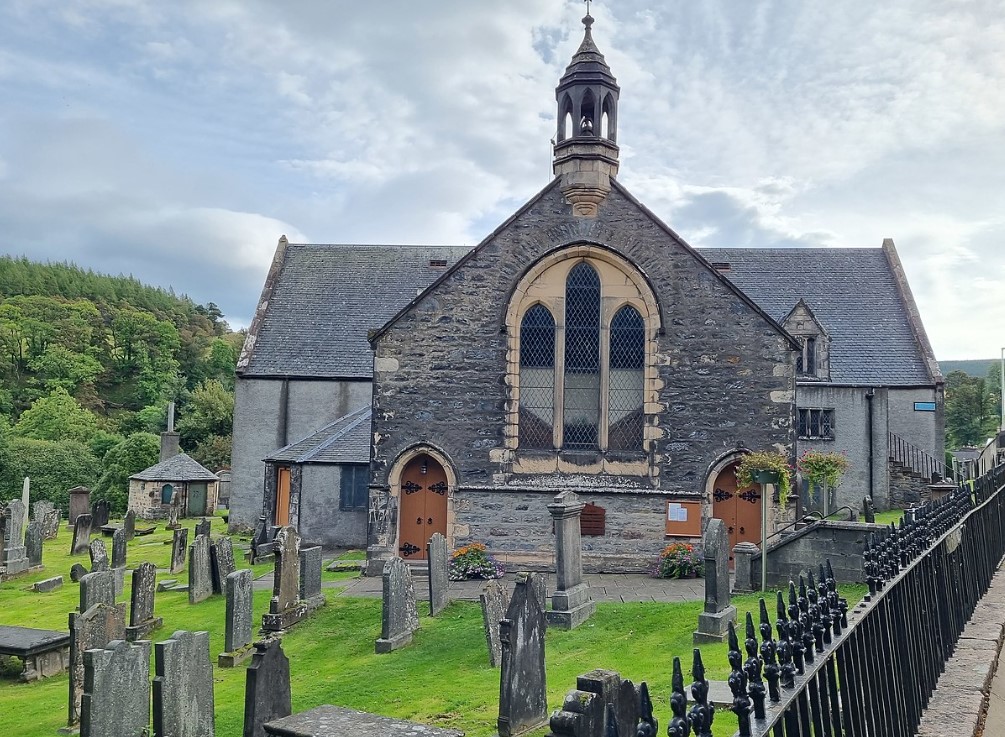 The commander of RAF Lossiemouth arranged a fly-past.
The commander of RAF Lossiemouth arranged a fly-past.
In early 2003, sixty-three years after the fighter crashed, a licensed excavation of the site was arranged against the wishes of Gordon’s sister. “Let sleeping dogs lie,” said Beatrice Strathdee, then 88 “I don’t think that’s fair. It was so long ago. What can they do about it now anyway?” The group of aviation archaeologists from Hastings undertaking the excavation had won full permission and were granted a license to go ahead. This usually follows a strict procedure by the MOD to check records in advance for possible war grave status (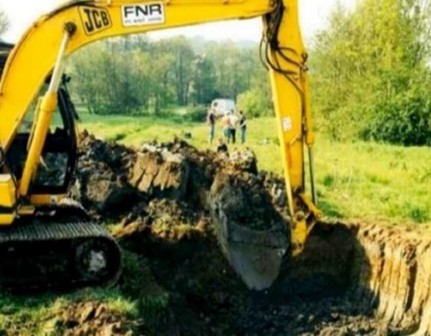 crew still missing); at the beginning of June the excavation commenced, merely expecting to uncover artefacts from the wrecked Spitfire beneath the meadow beside the River Uck; instead there was a macabre discovery of the remains of Gordon still strapped into the armour plating around the back of the pilot’s seat The remains also included his service tunic, lifejacket, harness straps and parachute. A further search yielded his RAF identity disc which ultimately proved conclusive
crew still missing); at the beginning of June the excavation commenced, merely expecting to uncover artefacts from the wrecked Spitfire beneath the meadow beside the River Uck; instead there was a macabre discovery of the remains of Gordon still strapped into the armour plating around the back of the pilot’s seat The remains also included his service tunic, lifejacket, harness straps and parachute. A further search yielded his RAF identity disc which ultimately proved conclusive 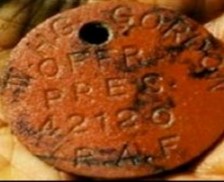 Near the extreme reach of the excavator at about 22 feet the largest of all the items were found including the smashed Merlin engine and a crumpled supercharger as well as other items such as an oxygen bottle, various cockpit instruments and a broken rudder pedal.
Near the extreme reach of the excavator at about 22 feet the largest of all the items were found including the smashed Merlin engine and a crumpled supercharger as well as other items such as an oxygen bottle, various cockpit instruments and a broken rudder pedal.
By means of several Supermarine labels it was now possible to establish the true Spitfire identity as being X4035 (the date of manufacture confirmed as July 1940); and not as previously thought X4036.
His remains and uniform were finally buried with military honours in accordance with his family’s wishes in a foot long coffin on the 26th. June 2003 in Mortlach Cemetery, Dufftown, Moray, Scotland with that of a sister, Elizabeth Gordon who died in 2002 aged 72 and had always tended his original grave.
About one hundred people from his close family, the RAF, and the town paid tribute to the pilot during the 40-minute service. It ended at noon with a fly-past by a single Tornado.
Wing Commander Bob Doe remembered his comrade ‘Scotty. ‘We knew each other well although we were not close friends – he was a quiet, retiring chap.’ Mr Doe, who was 83 in 2003 and at the time was Britain’s highest scoring living Battle of Britain pilot – also remembered the battle over Hadlow Down in which ‘Scotty’ died. He recalled trying to avoid the yellow-nosed Messerschmitts and concentrate on shooting down a Dornier bomber.
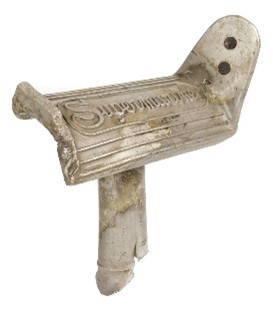
On the 20th. May 2021 the rudder pedal recovered from Spitfire X4036 by Steve Hall and Andy Saunders was auctioned in Cirencester and sold for £2,800.
© Hadlow Down Village Trust 2023
